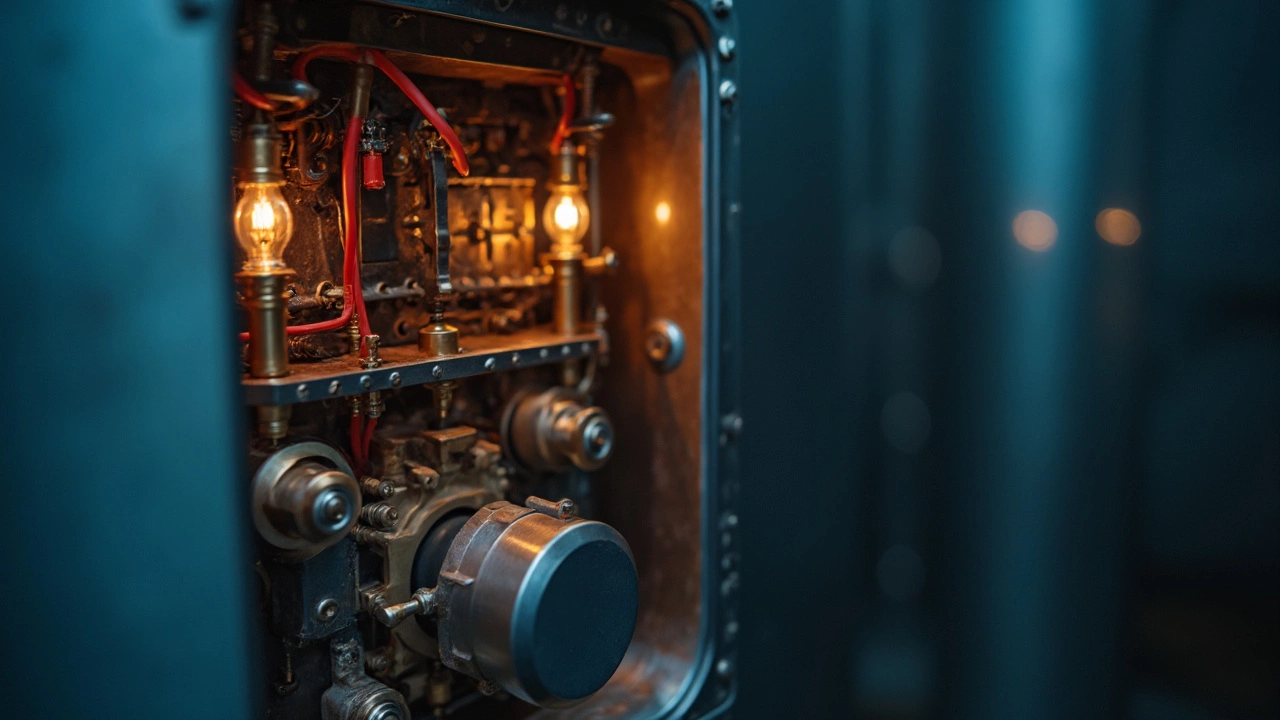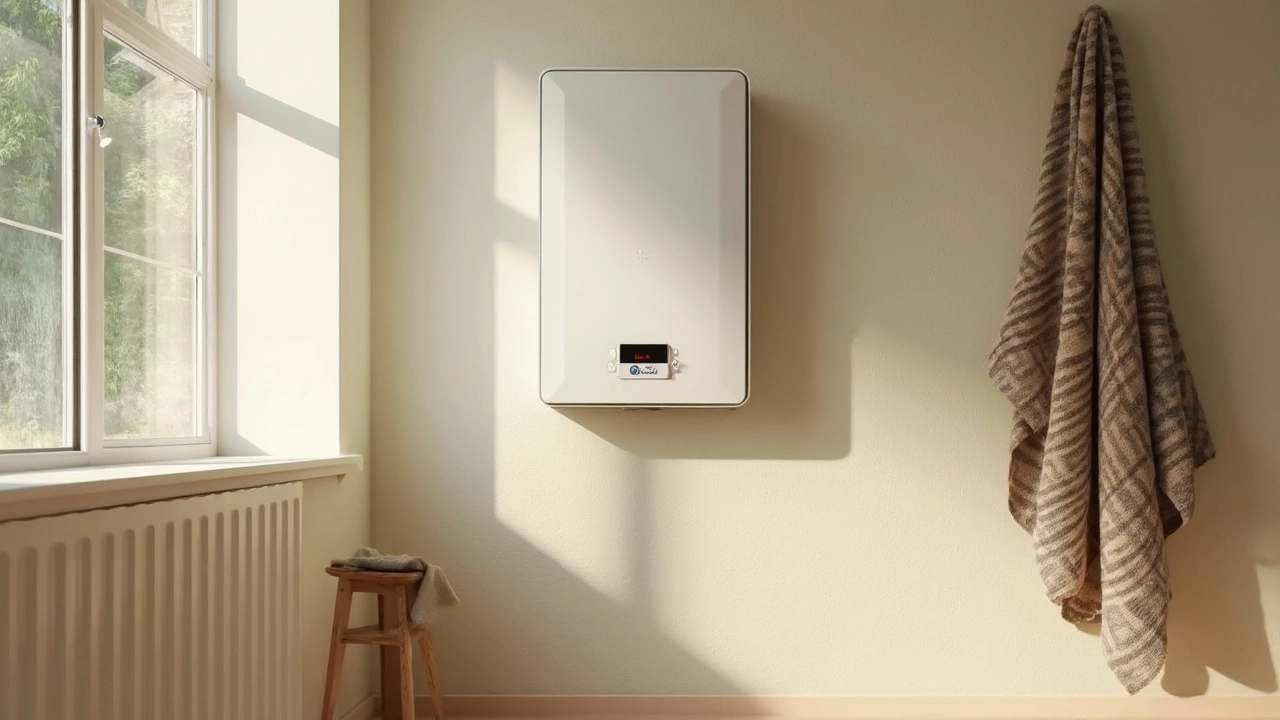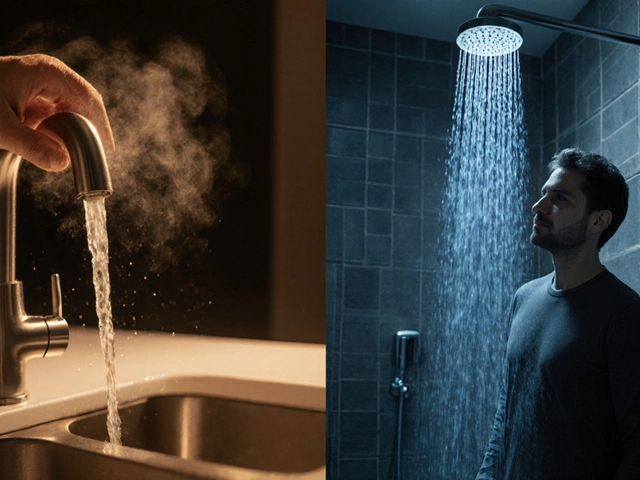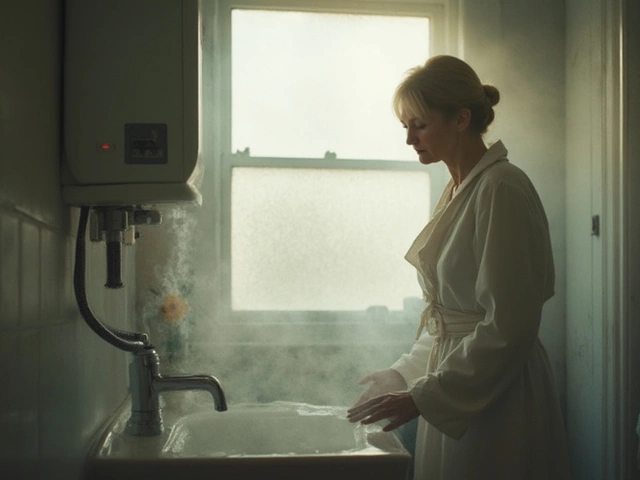Ever been jolted awake by an unexpected cold shower? It's likely your water heater is trying to tell you something, and it might be time for a reset. But how do you know for sure? Knowing the signs can save you a lot of hassle.
First off, if you're getting inconsistent water temperature or your water heater is making strange rumbling noises, it could be signaling for a little attention. Even frequent power outages can cause your water heater's safety features to trip, necessitating a reset. However, ensure you know what you're doing before hitting that reset button.
Before diving into the reset process, it's crucial to understand why your water heater needs it in the first place. Routine maintenance checks and recognizing early symptoms can preempt many issues. Also, be mindful of potential mistakes like resetting it too often, which could disguise underlying problems.
- Signs Your Water Heater Needs a Reset
- Understanding Why Your Water Heater May Need Resetting
- How to Safely Reset Your Water Heater
- Common Mistakes to Avoid When Resetting
- Maintenance Tips to Prevent Future Issues
Signs Your Water Heater Needs a Reset
Let's face it, water heaters aren't whispering their problems to us, so it's our job to catch the clues they leave. Recognizing when your water heater needs a reset can save you from unexpected cold showers or worse, costly repairs.
1. Inconsistent Water Temperature
Have you noticed your showers going from steaming hot to teeth-chatteringly cold in seconds? That's a classic sign your water heater might need reset. Temperature fluctuations are usually the first symptom of trouble.
2. Strange Noises
If your water heater starts gurgling or making banging sounds, it's often due to mineral build-up at the bottom of the tank. These noises can trigger the system to trip as a protective measure, signaling it might be reset time.
3. Power Issues
Frequent power surges in your home can also be a culprit. They sometimes trip the water heater's limit switch, which automatically cuts power to prevent overheating. A reset might just bring everything back to normal.
To help you visualize the potential savings, consider this:
| Problem | Potential Cost without Reset |
|---|---|
| Temperature Fluctuations | $200 - $600 |
| Internal Noises | $300 - $800 |
| Electrical Issues | $150 - $500 |
Being aware of these signs and acting promptly can keep your water heater in tip-top shape, dodging bigger issues down the line. So next time you're puzzled by cold water, a quick reset might just do the trick!
Understanding Why Your Water Heater May Need Resetting
So, why might your water heater suddenly demand a reset? It's more common than you think, and understanding the reasons can save you from unnecessary headaches.
Tripped Reset Button
Your water heater comes with a built-in safety feature called the reset button, often referred to as the 'high-limit switch.' Essentially, it trips when the water temperature exceeds a safe level, preventing the heating element from causing damage or overheating. If you've noticed a drop in hot water supply, it might be because this safety mechanism has kicked in.
Power Surges or Outages
Ever had a storm knock out your power? Or maybe your area's electricity is just a bit finicky? Power surges and outages can mess with your water heater's settings, causing it to need a reset. After a power hiccup, it’s always worth checking if the reset button has been tripped.
Malfunctioning Thermostat
Another reason your water heater might need a reset is a faulty thermostat. When the thermostat doesn't correctly gauge the water’s temperature, it can heat it to dangerous levels, tripping that reset button.
Element Issues
Your water heater has elements that heat the water. If these elements get damaged or corroded, they can become overactive, again leading to the high-limit switch tripping. Regular checks on these components can help prevent surprises.
| Issue | Frequency |
|---|---|
| Thermostat Fault | 25% |
| Heating Element Problems | 35% |
| Power Surges | 15% |
It's good to be aware that dealing with a tripped reset button is often a symptom of another issue, not the root cause. If you're frequently resetting it, consider calling in a professional to take a deeper look at your water heater.

How to Safely Reset Your Water Heater
Resetting your water heater is not complicated, but it does demand a bit of caution. After all, we're dealing with electricity and hot water — a mix that needs respect. So, how do you do it safely?
Step-by-Step Guide to Resetting
- Turn Off the Power: First things first, find the circuit breaker for your water heater and turn it off. If the heater is gas-powered, make sure to switch off the gas supply. Safety is key!
- Locate the Reset Button: Typically, there's a panel on the heater's side. You might need a screwdriver to open it. Once inside, look for a red button—this is usually the reset button.
- Press and Hold: Firmly press the red button. Hold it for a few seconds and release. You might hear a click, indicating the reset is happening.
- Close the Panel: Secure any screws and close the panel up tightly.
- Switch the Power Back On: Finally, return to the circuit breaker and turn the power back on. If it’s a gas heater, reconnect the gas supply.
According to Jim Hendricks, a technician with over 20 years of experience, “Always ensure the area is dry when working with electrical components of a water heater. Moisture can lead to electrical faults.”
When to Call a Professional
If the reset doesn't work and your water is still not warming up, it's a sign to call in a pro. Repeated resets aren't a fix-all and might point to bigger issues like a faulty thermostat or heating element.
Key Takeaways
- Ensure the power is off before starting.
- Know where your heater's reset button is located.
- If a reset doesn’t solve the issue, seek professional help.
A broken water heater isn't fun, but with these steps, you should have some warm water flowing again without too much stress. And remember, if it feels like too much, there's no shame in calling an expert.
Common Mistakes to Avoid When Resetting
Resetting your water heater might seem like a quick fix, but if done incorrectly, it could lead to more hassle down the line. So what are the pitfalls to watch out for?
Skipping Safety Precautions
Going straight for the reset button without switching off the power supply is a big no-no. Ignoring this simple step could pose an electrical hazard. Always make sure the unit is powered off completely before trying anything else.
Overlooking the Underlying Issue
A reset can sometimes make the problem vanish temporarily, but don’t get complacent. If your water heater frequently demands resets, it might have a deeper issue that needs to be checked by a professional. Ignoring these signs might worsen the condition.
Frequency of Resets
Think once, maybe twice, but not every week. Constant resetting is not a form of maintenance; rather, it's an indication there might be an issue. Beyond simple fixes, the reset button isn’t meant to be a permanent solution.
Lack of Regular Maintenance
Regular check-ups can prevent many common issues, including the need for multiple resets. Consider scheduling an annual service to ensure your system is running smoothly. A little maintenance goes a long way in preventing surprises.
Neglecting Age of the Water Heater
If your unit is nearing or past its warranty period, frequent resets could be a sign that it's time for a new one. Continuing to reset old or worn-out heaters is not cost-effective and might rack up bills you weren’t expecting for repair or even replacement.
Avoiding these common missteps can not only extend the life of your water heater but also keep those cold showers at bay. A bit of precaution now saves a lot of headaches later.

Maintenance Tips to Prevent Future Issues
Keeping your water heater in top shape doesn't require a lot of work, but a few simple steps can make a huge difference. Regular maintenance can help avoid unexpected cold showers and keep your heating bills down.
Regular Flushing
One crucial step is flushing your water heater at least once a year. Sediments can build up at the bottom, causing it to work harder and even overheat. Here’s a quick how-to:
- Turn off the power supply and cold water valve.
- Attach a garden hose to the drain valve.
- Run the hose to a nearby drain or outside area.
- Open the drain valve and let the tank empty.
- Close the valve, remove the hose, and refill the tank before turning the power back on.
Doing this can extend the life of your heater and ensures it operates efficiently.
Temperature Check
Ensure the thermostat is set to the right temperature, around 120°F, to prevent scalding and reduce the risk of overheating.
Inspect the Pressure Relief Valve
Every six months or so, check the pressure relief valve. It’s an important safety feature that releases pressure if the tank gets too hot. Here’s how:
- Lift the valve's lever and let it snap back. You should hear a gurgling sound, indicating water has been released into the overflow pipe. If not, it might need a replacement.
Look for Leaks
Regularly scan the area around your water heater for signs of leaks. Any puddles or damp spots could mean trouble, either with the tank or connected pipes. Fixing these early can prevent major headaches later.
| Maintenance Task | Frequency |
|---|---|
| Flush Tank | Once a year |
| Inspect Pressure Valve | Every six months |
| Check for Leaks | Monthly |
| Set Temperature | Quarterly |
By following these simple tips, your water heater can last longer and operate more efficiently, saving you both time and money. Prevention is definitely better than a freezing shower!




